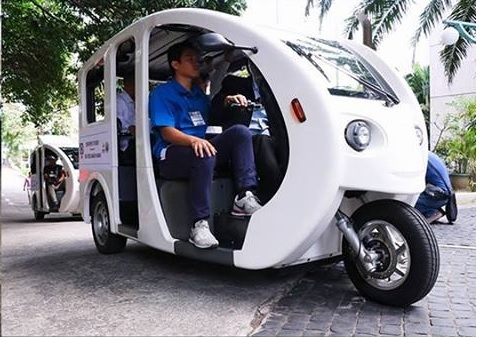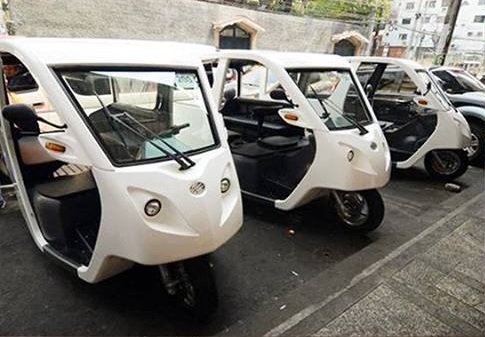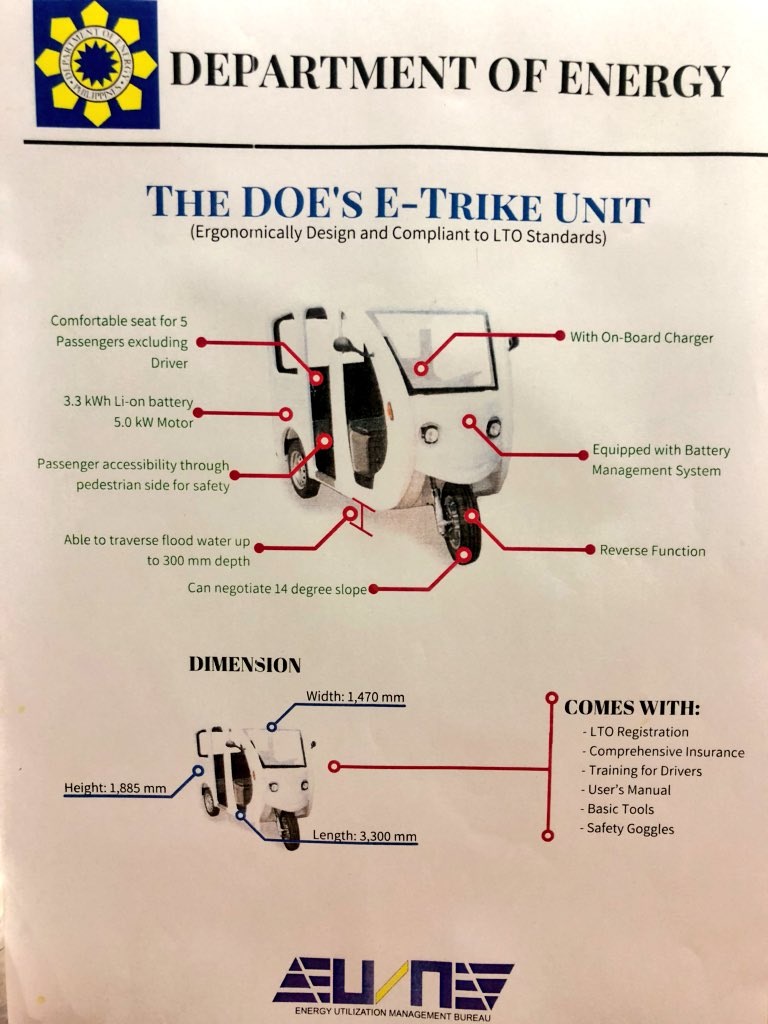Dream – Explore – Discover
Rent a scooter or motorcyle in Moalboal to explore the nature and hidden Gems in south of Cebu.
Text/Call: +639474201572/ +639560429095…See Morehttps://web.facebook.com/moalboalrental/?_rdc=1&_rdrhttps://www.gamintraveler.com/2019/01/01/how-to-get-to-moalboal/
New model ‘jeepneys’ hit the roads in Philippines
New version of the Philippine transport workhorse now has air conditioning, automatic fare collection systems and emergency exits
Published: July 21, 2018 14:16Gilbert P. Felongco, Correspondent
Manila: A fleet of more than 200 vehicles — modernised versions of the Philippines’ ubiquitous “jeepney” — have started plying the roads of Metro Manila and other parts of the country as part of a massive transport overhaul programme.
“It’s about time that Filipinos start using public transport that in not only comfortable, but also efficient, environment-friendly and safe,” Transport Secretary Arthur Tugade said as the Philippines launched the new, modernised jeepneys.
King of the road
Regarded as the “King of Philippine Roads” the jeepney has come a long way from its roots as converted “general purpose” US military jeeps left behind in the Philippines by American soldiers after the Second World War.
Aside from a more modern look, which does away with the long front end engine bay, the new iteration of the public transport vehicle is now more roomy and features WiFi, GPS, dash cameras, CCTVs and speed limiters, among other modern comforts.
While the old jeepneys are notorious for their smoggy emissions, noise and minimalist amenities, the new iteration of the Philippine transport workhorse now has air conditioning, automatic fare collection systems and emergency exits for differently-abled passengers.
“The new modern jeeps are as safe as any other public transport can get. It is like a big bus in a lot of things except for its size which is just right for the narrow Philippine roads,” Tugade said.
He said that initially, there will be more than 200 in operation in Metro Manila and in Clark in Pampanga, but the government will eventually replace the more than 240,000 jeepneys that are in operation in the country.
The Department of Transportation (DoTr) plans to replace all public utility vehicles (PUV) aged 15 years or older under its PUV Modernisation Programme (PUVMP).
Public utility
Tugade said the new public utility transport vehicles are more environment-friendly.
“They either come in versions that use Euro4 compliant gasoline on diesel engines and even electric motors,” he said.
The PUVMP was first launched in Tacloban City, Leyte, in January where it initially deployed 45 solar-powered jeepneys. In June, 15 out of 35 modern jeepney units of the Senate Employees Transport Service Cooperative were rolled out.
The new transport mode are being welcomed by old hands who had spent years driving the old, smoggy.
“I had lost a number of my driver friends through the years from lung disease such as tuberculosis and emphysema because of the dirty air they were exposed to from driving old, diesel-fed jeepneys.
“Truly, the new jeepneys are a welcome relief for us,” Nicanor Perez Jr, who had been a public utility jeep driver for more than 27 years, told Gulf News in an interview.
900 ‘e-trikes’ deployed in Manila
Three-wheeled electric vehicles aimed at replacing petrol-powered ‘traysikel’ that have ruled the Philippine side roads for decades
Published: June 02, 2018 20:25Gilbert P. Felongco, Correspondent

Manila: Starting this month, a total of 900 “e-Trikes” will be plying the streets of the four Metro Manila cities under a government programme to transition towards “cleaner” transport alternatives.
“The Department of Energy (DOE) e-Trike is a project that encourages the transition from oil to cleaner sources of energy,” Energy Secretary Alfonso Cusi said.
 The Philippines’ Department of Energy (DOE) will provide 100 e-trikes to Las Piñas, 150 to Muntinlupa, 400 to Pateros and 250 to Valenzuela. Each e-trike costs P450,000. The donations are part of the DOE’s joint effort with the Asian Development Bank called the Market Transformation through Introduction of Energy Efficient Electric Vehicles (E-Trikes) Project. Facebook
The Philippines’ Department of Energy (DOE) will provide 100 e-trikes to Las Piñas, 150 to Muntinlupa, 400 to Pateros and 250 to Valenzuela. Each e-trike costs P450,000. The donations are part of the DOE’s joint effort with the Asian Development Bank called the Market Transformation through Introduction of Energy Efficient Electric Vehicles (E-Trikes) Project. Facebook
Under a programme funded by the Asian Development Bank, an initial 900 units of the e-Trikes will start plying the side streets of Las Piñas, Muntinlupa, Pateros and Valenzuela.
“The DOE E-Trike is a project that encourages the transition from oil to cleaner sources of energy,” @doe_ph Secretary Alfonso Cusi said.
Ang nakakuha ng e-trikes ay ang Las Piñas, Muntinlupa, Valenzuela, at Pateros. #GoingGreen #BetterPhilippines
Story: https://t.co/1EzFVz33pW pic.twitter.com/HOIHLggQPV— Flying Ketchup (@FlyingKetchup) June 2, 2018
The three-wheeled electric vehicles are aimed at replacing petrol-powered ‘traysikel” (tricycles) that have ruled the Philippines’ side roads for decades.
Earlier versions of the electric-powered vehicle had been in use for some time in Metro Manila’s Mandaluyong City.
 The donation to the Metro Manila local government units followed the grant of 200 units of e-trikes to Marawi City as rehabilitation efforts gathered pace. Faceook
The donation to the Metro Manila local government units followed the grant of 200 units of e-trikes to Marawi City as rehabilitation efforts gathered pace. Faceook
“The 900 units to be given to the four cities will benefit many communities, in terms of livelihood and services that it can provide to the people,” Cusi emphasized.
During the 1970s-traysikels started to proliferate in the country as part of the energy crunch at that time which made petrol prices more costly.
Later on, Philippine emission laws forced the transition from the two-stroke engines more common to the traysikes at that time, to more economical to operate and less polluting four stroke internal combustion engines.
Nevertheless, studies found out that traysikels had remained as among the top sources of air pollution in the country.
Compared with the gas-fed traysikel, the e-Trike had gone far in terms of advancements.

source https://kristelmaedelvalle1.wordpress.com/2020/03/19/1312/







